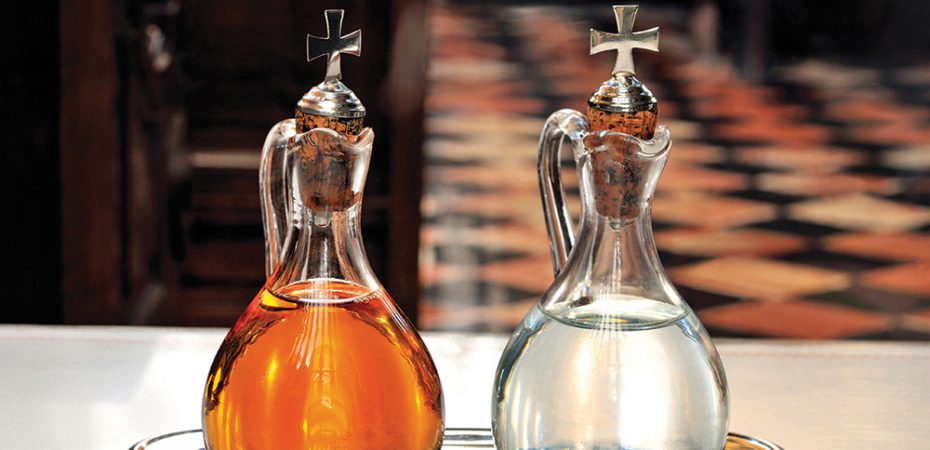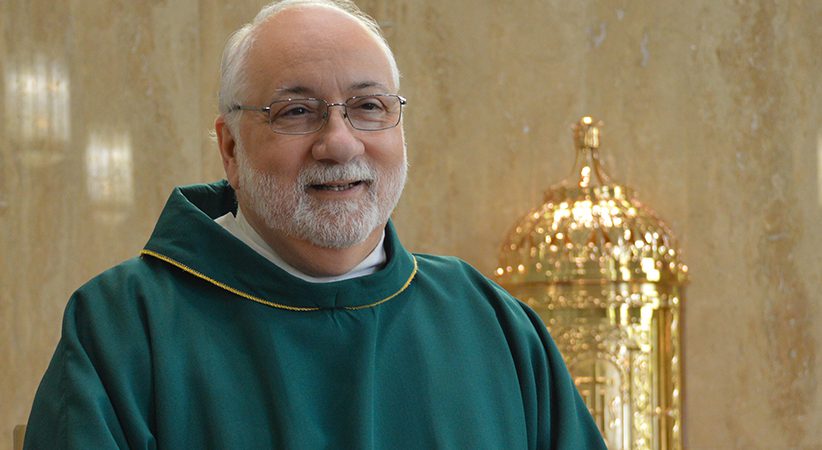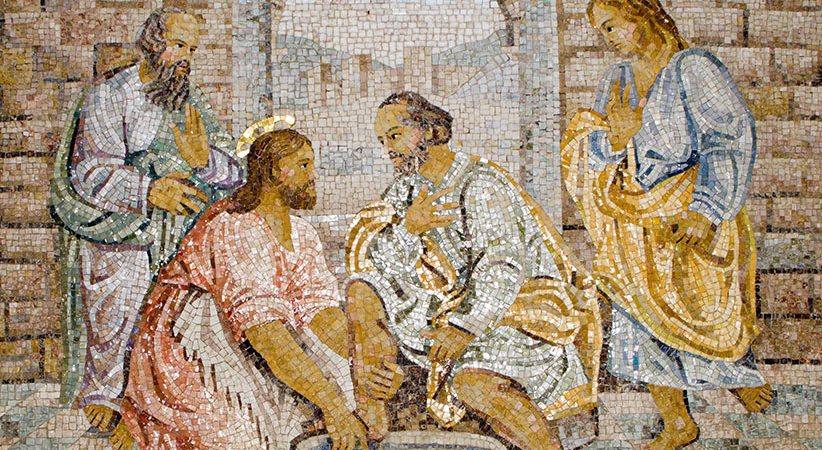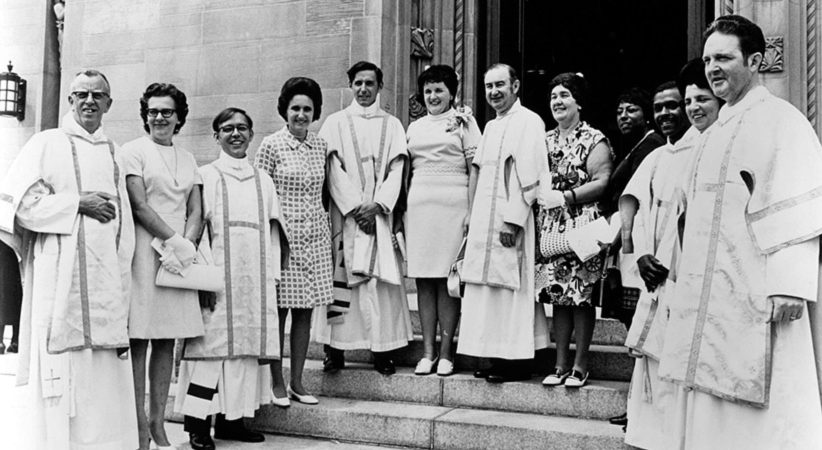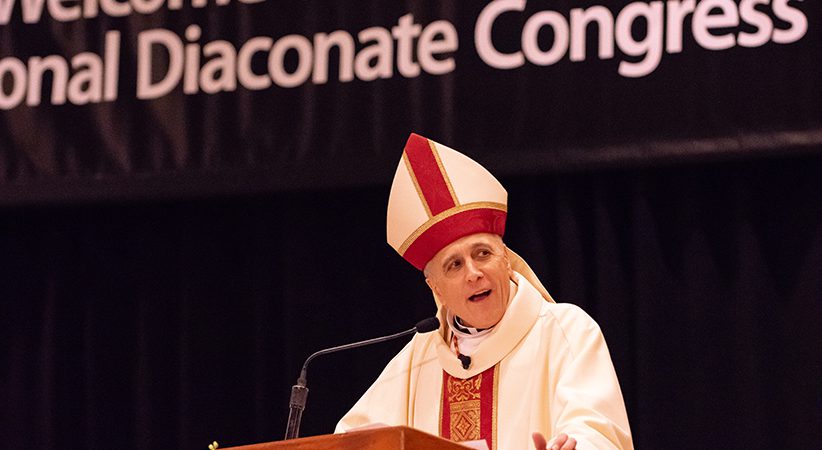The Mixture of Water and Wine
A reminder that we are one with Christ
Deacon William T. Ditewig Comments Off on The Mixture of Water and Wine
At the heart of our lives as Catholics is the Eucharist, the “the summit toward which the activity of the Church is directed [and] the font from which all her power flows” (Sacrosanctum Concilium, No. 10).
Recently, Lent invited us to reflect on our role as deacons in the Eucharist, perhaps never more so than after the events and challenges of the last year. For some of us, it has been possible to assist at Mass. But for many, we have joined our people in a kind of “Eucharistic fast,” participating as best we can, often through livestreamed Masses. Never has it been more important to consider the central role of the Eucharist in our lives.
The deacon and the Eucharist is too broad a topic to tackle here, so I want to focus on one responsibility of the deacon in the Mass of the Roman rite — namely, the preparation and presentation of the wine mixed with water for the sacrifice. During this action, we pray in a low voice, “By the mystery of this water and wine may we come to share in the divinity of Christ who humbled himself to share in our humanity.”
Historical Aspects
This action, often overshadowed by other ritual elements such as music and even the passing of the collection basket, is nonetheless a rich theological moment. I would suggest that it is arguably the most theologically significant liturgical action entrusted to the deacon. The acts we perform and the words we pray at that moment are not to be undertaken lightly or superficially. They are rich in history and theology.
To guide our reflection, we turn to a classic source, the landmark “Mass of the Roman Rite: Its Origin and Development” (Christian Classics, $55) by Joseph A. Jungmann. Father Jungmann highlights three historical aspects of this ritual action: the admixture of water to the wine, the placement of the offerings on the altar and the words used to accompany the action.
The practice of adding water to the wine used for the sacrifice goes back almost to the beginning, and there has always been a strong symbolic meaning given it. The water represents all of humanity, human nature itself, while the wine represents Christ.
Some ancient accounts prescribe equal amounts of water and wine, while the Gnostics (rejecting any use of wine) demanded that celebrants use only water. Bishop Cyprian of Carthage (c. 200-58) responded, “When someone offers only wine, then the blood of Christ begins to exist without us; but when it is only water, then the people begin to exist without Christ.”
What a wonderful reminder the bishop gives us: that always we are to be one with Christ, and this is expressed sacramentally in the joining of water with the wine.
Jungmann details the increasingly complex rituals associated with the placement of the gifts on the altar. In the early Middle Ages, it was the deacon who assisted with receiving the gifts from the people and arranging them on the altar. This was a solemn act, and only when it was completed would the bishop rise and come to the altar. During this time, it was customary in many places for the preparation of the water and wine to be done before Mass, and the chalice was brought to the altar by a subdeacon and handed to the deacon, who placed it on the altar without a word.
By the year 1000, the rites had expanded and now these actions were accompanied by prayers and blessings. When the deacon handed the bread-offering to the presider, it was with a prayer of blessing and offering, which was then essentially repeated by the celebrant. This was repeated with the chalice, with the deacon first offering the chalice with a prayer to the bishop, and then the celebrant repeating it.
Eventually, for reasons too complex to summarize here, the practice of adding the water to the wine at the altar became more common. Pope Pius V confirmed this practice in his liturgical reforms (1570). Finally, to accompany the action of adding a little water to the wine, a prayer used in various places outside of Rome found its way into the Roman liturgy. This prayer remained in place until the liturgical reforms following the Second Vatican Council, when it was simplified to its current form, the prayer that we use at every Mass today.
Profound Theological Meaning
I have offered these historical points, not as an academic exercise, but to show the profound theological meaning associated with these rites, in their various forms, from the earliest days of the Church. Sometimes, it might be tempting, given the “busy-ness” of everything going on at that point in the Mass, to treat the rites perfunctorily or only as “setting the table.”
I am not suggesting that we be ostentatious in our actions, drawing attention to ourselves. However, I am suggesting that we consider our inner dispositions as we do these things. Do we handle the vessels with care? Do we act with some solemnity in our movements? Do we truly internalize the words we are privileged to pray as we add the water to the wine?
……………………………………………………………………………………………………………………………………………………………….
BISHOP CYPRIAN’S APPROACH
“For Cyprian, the key issue here was not the commingling in itself but what it expressed. Together with other Church Fathers, he resisted a false separation between God and humanity that had been overcome by God himself when he assumed every aspect of our human condition at his conception and birth.”
— Father Billy Swan, “The Mystery of Christmas, Water and Wine,” Word on Fire blog, Dec. 23, 2019
……………………………………………………………………………………………………………………………………………………………….
After all, on behalf of ourselves and our people, we are holding our very humanity in our hands when we pick up the water. The water that we add reminds us that, as the water is subsumed into the wine, so we are made one with Christ. The words we pray remind us that Our Lord himself shares in our humanity so that we might share in his divinity. Just as the water is inseparable from the wine, so too do we pray to be inseparable from Our Lord, offering ourselves with him to the Father through the power of the Holy Spirit.
On the great feast of the Baptism of the Lord, we read from 1 John 5:6-8 words that express this beautifully: “This is the one who came through water and blood, Jesus Christ, not by water alone, but by water and blood. The Spirit is the one that testifies, and the Spirit is truth. So there are three that testify, the Spirit, the water, and the blood, and the three are of one accord.”
DEACON WILLIAM T. DITEWIG is a deacon of the Archdiocese of Washington, D.C., currently serving in the Diocese of St. Petersburg in Florida. He is the former executive director of the Secretariat for the Diaconate at the USCCB and is a retired Navy commander.
…………………………………………………………………………………………………………………………………………………………
‘Water-down’ Christianity and Importance of Renewal
“Indeed, we Christians live in the world, fully integrated into the social and cultural reality of our time, and rightly so; but this brings with it the risk that we might become ‘worldly,’ that ‘the salt might lose its taste,’ as Jesus would say (cf. Mt 5:13). In other words, the Christian could become ‘watered down,’ losing the charge of newness which comes to him from the Lord and from the Holy Spirit. Instead it should be the opposite: When the power of the Gospel remains alive in Christians, it can transform ‘criteria of judgment, determining values, points of interest, lines of thought, sources of inspiration and models of life’ (Paul VI Apostolic Exhortation, Evangelii Nuntiandi, No. 19). It is sad to find ‘watered-down’ Christians, who seem like watered-down wine. One cannot tell whether they are Christian or worldly, like watered-down wine; one cannot tell whether it is wine or water! This is sad. It is sad to find Christians who are no longer the salt of the earth, and we know that when salt loses its taste, it is no longer good for anything. Their salt has lost its taste because they have delivered themselves up to the spirit of the world, that is, they have become worldly.” — Pope Francis, Angelus address, Aug. 31, 2014
………………………………………………………………………………………………………………………………………………………….

